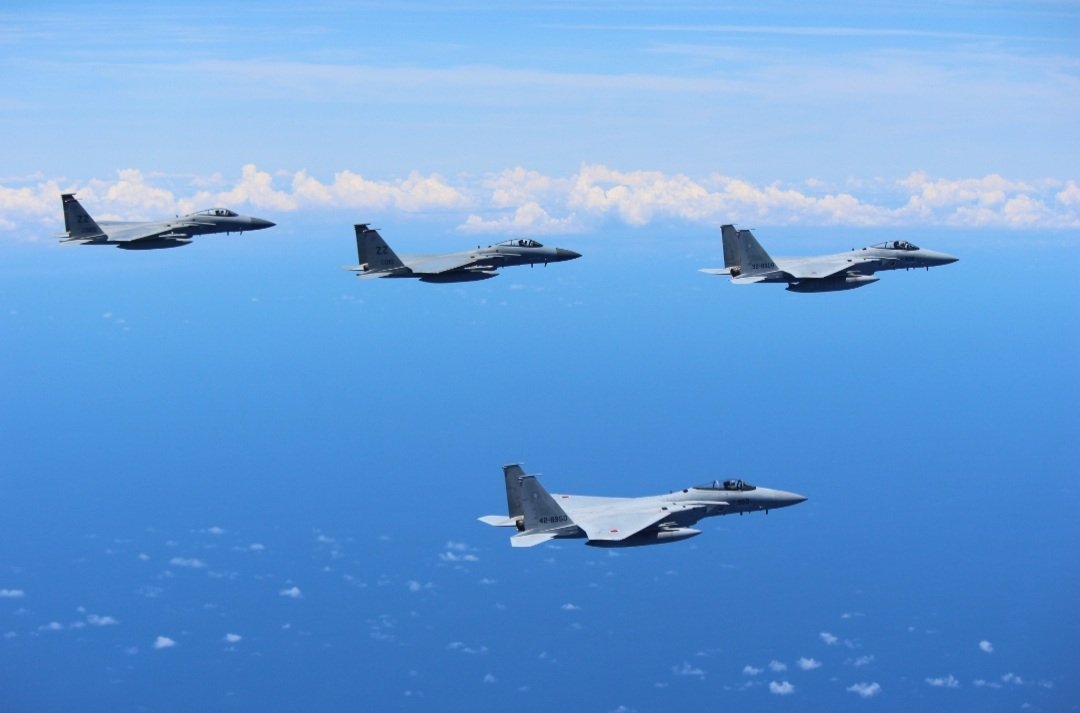The US Air Force 18th Wing withdrew the first batch of F-15 Eagles from Kadena Air Base, Japan, on December 1, 2022, beginning a phased pullout of the fighter jets from Kadena.
The Eagles will fly to the Oregon Kingsley Field Air National Guard Base, the service announced. Following that, some will continue to serve at various Air National Guard (ANG) units throughout the United States, while others will be stored at the 309th Aerospace Maintenance and Regeneration Group.
In late October, the USAF first announced that it would start removing aging F-15 Eagles from Kadena as a part of its modernization efforts. The service stated that the phased withdrawal of the F-15s would occur over two years.
The F-15C/D fighters of the Air Force are nearing the end of their service lives and have been in service for over three decades — some are even approaching 40 years. On September 29, 1979, the 18th Wing, formerly the 18th Tactical Fighter Wing, acquired its first F-15C.
Kadena is home to two squadrons of US Air Force (USAF) Boeing F-15C fighter jets. These two squadrons are the 44th Flight Squadron, also known as the Vampires, and the 67th Flight Squadron, also designated as the Fighting Cocks.
The 67th Tactical Fighter Squadron was the first squadron in the Pacific Air Forces to fully operationalize the Eagle. Since then, the F-15C/D has ensured air superiority for the United States and its allies throughout the Indo-Pacific Command area of duty.

The USAF said it would keep a steady-state fighter force at Kadena by temporarily sending more advanced and capable aircraft to “backfill” the F-15s as they return to the US.
The US Air Force spokeswoman mentioned that the Air Force would rotate fourth- and fifth-generation aircraft to replace F-15s.
The withdrawal of this first batch of Eagles, according to 18th Wing leadership, is a ‘poignant’ but vital step in assuring Team Kadena remains prepared to defend Japan and maintain regional peace.
“While I’m sad to see the F-15 go, it’s important to maintain an advanced fighter presence here in Okinawa,” Brig. Gen. David S Eaglin, 18th Wing commander, said.
“Our adversaries have advanced and progressed since 1979, and we must do the same. I look forward to the future as we work through the challenges of divesting an airframe that serves admirably as we modernize our defenses and evolve to the threats we face today,” he added.
Concern Over The Withdrawal Of F-15 Jets
The departure of US Air Force (USAF) Boeing F-15C fighter jets from Kadena Airbase has raised worries about the US’ Indo-Pacific force capability. Many former US officials and experts had previously questioned the two-year phased withdrawal plan.
The former deputy commander of the US Pacific Command noted that replacing fighter squadrons on Okinawa with rotational units would have severe consequences that would be difficult for the Air Force to address.
Given Okinawa’s proximity to Taiwan and the Korean Peninsula, he asserted that it is crucial to maintain an air dominance fighter presence there.
In a letter to Defense Secretary Lloyd Austin dated November 1, prominent Republican legislators expressed concern over a “tangible reduction in American forward combat power.”

However, several experts said that the F-15s need to be retired because they are outdated. The aircraft is built for air-to-air warfare with a 20mm cannon and missiles. The aircraft’s primary duty is to protect friendly airspace from intruders, but it can also protect other aircraft while they are attacking hostile territory.
Meanwhile, the 3rd Wing at Joint Base Elmendorf-Richardson, Alaska, sent about a dozen F-22 Raptors to Okinawa on November 4 to begin a six-month rotation while the F-15s returned to their home.
According to the Air Force, the Raptors are being used as “backfill” for the retiring F-15s. But the Defense Department still lacks a long-term strategy for Kadena. The plans, however, all call for fighters with capabilities above and beyond those of the F-15C and D.
Ben Lewis, a defense analyst told the EurAsian Times, “F-15Cs are an older platform, much less capable than the F-22. If there is a conflict in the region, especially if that conflict is against the PRC, it makes much more sense to have advanced fighters at Kadena than F-15s.”
Until the military settles on a permanent solution, the USAF explained it would continue using its global force management process to maintain the fighter presence at Kadena to ensure regional deterrence and strengthen its capacity to fulfill the USA’s treaty responsibilities to Japan.
- Contact the author at ashishmichel(at)gmail.com
- Follow EurAsian Times on Google News




